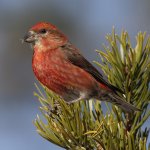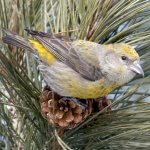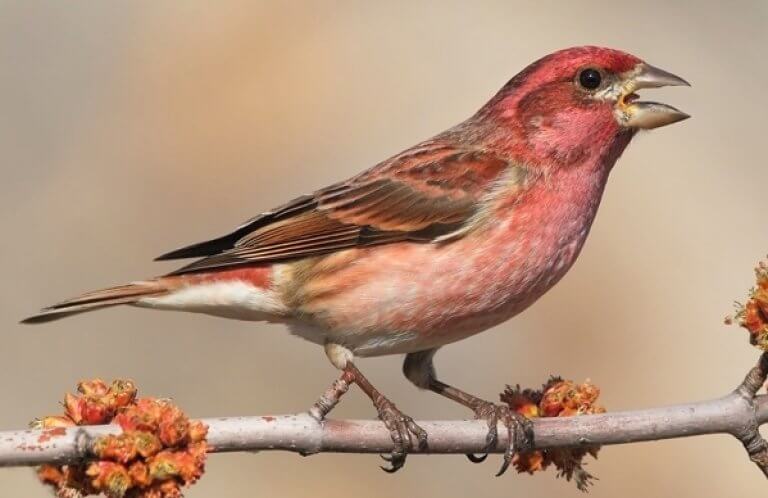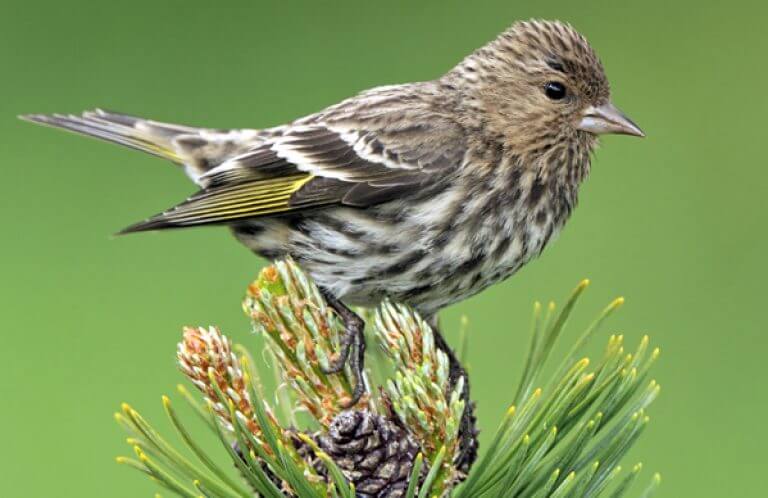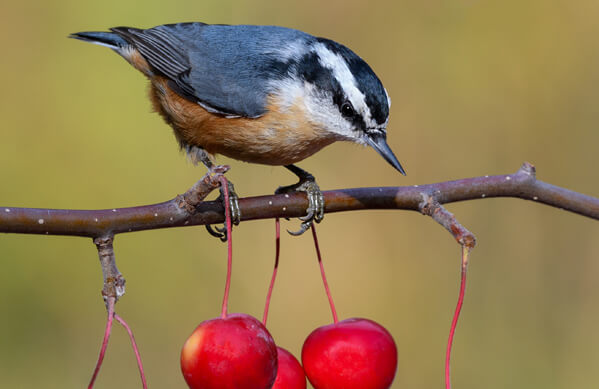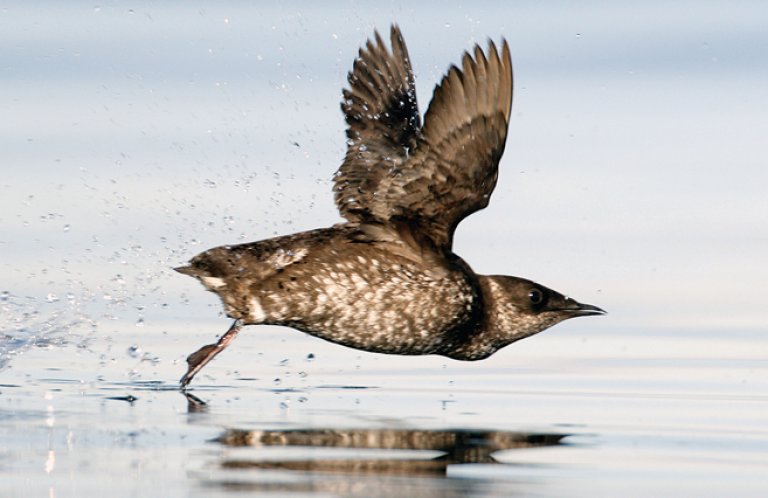About the Red Crossbill
The Red Crossbill is an intriguing, somewhat mysterious bird found in conifer forests around the world. This medium-sized finch, slightly larger than a Purple Finch, has a unique, strongly curved beak that crosses in an X at the tips. Males, which range from a deep red to yellow-orange color, are slightly larger than females. Females are a duller gray-green to yellow, and juvenile birds have brown-streaked plumage. All adults have dark brown wings and dark brown, notched tails.
But this bird's unique beak is only one aspect of its intrigue.
Call Types and Conifers
Red Crossbills are highly variable in body size, bill shape and size, and flight call types, depending on the conifer species they favor as a food source. This association between call types and conifer species has led to the description of a whopping 21 subspecies of Red Crossbill, at least 8 of which occur in North America. Some of these may actually be separate species, such as the newly-described Cassia Crossbill, formerly considered a subspecies of Red Crossbill.
Ornithologists continue to gather information about these different populations of Red Crossbill, their distribution and movements, and other details that could lead to additional species being described. Interested citizen scientists and birders can participate in this process! Visit eBird to learn more about how you can contribute.
Songs and Sounds
A typical Red Crossbill flight call can roughly be described as jip-jip-jip.
Listen here:
Here are a few of the different types of flight calls already described, which might represent potential species. See if you can hear any differences from the “typical” flight calls above!
Type 2 flight calls, recorded in Arizona:
Type 4 flight calls, recorded in Washington.
Type 10 calls and flight calls, recorded in New Hampshire.
Breeding and Feeding
Nesting on the Fly
The Red Crossbill is a social species, living in flocks year-round. Pairs form within these flocks, with males wooing mates with flight displays, song, and courtship feeding. Bonded pairs are thought to remain together throughout the year. The timing of Red Crossbill nesting is also variable. In years with abundant cone crops, these birds can nest multiple times, at almost any time of the year.

When the time is right, a mated Red Crossbill pair chooses a nest site, usually on a well-hidden conifer branch. The female builds her cup-shaped nest of conifer twigs lined with softer grasses, lichens, shredded bark, and feathers. Her mate contributes nesting materials during the construction. The female then lays three eggs, which she will incubate for approximately two weeks. The young crossbills hatch with wedge-shaped beaks, which gradually grow and cross at the tips as they fledge and begin to feed themselves. As with so many other aspects of a Red Crossbill's life, incubation, hatching, and fledging times are highly variable, depending upon food availability and weather.
Cone-Crop Specialist
The highly specialized beak of the Red Crossbill allows it to exploit a food source — conifer seeds — that is inaccessible to most birds. To reach seeds, a crossbill inserts its slightly-open bill into a cone, then closes it with the powerful jaw muscles. Because the bill tips cross, this pries apart the tough scales, and the bird then scoops out the seed at the base with its flexible tongue. While feeding, flocks clamber through the treetops using their feet and bills, somewhat like parrots. Feeding flocks are sometimes joined by other species such as Pine Siskin and Red-breasted Nuthatch.
Red Crossbills also consume grit or sand, which helps grind and digest the seeds that make up the majority of their diet. Flocks of crossbills can often be seen picking up grit on roadsides during snowy winters.
Region and Range
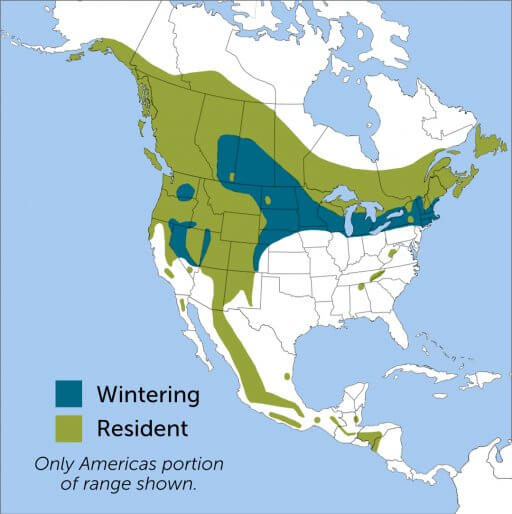
Red Crossbills are found almost exclusively in mature, coniferous forests across the Northern Hemisphere, including spruce, fir, hemlock, and pine forests. They can also be found in mixed deciduous-coniferous forests, as long as there are sufficient conifer seeds available.
Although not migratory, the Red Crossbill can wander widely in pursuit of cone crops. These movement patterns tied to food availability, known as irruptions, can be seen in other bird species such as the Snowy Owl and Evening Grosbeak. Red Crossbill irruptions may involve thousands of birds moving long distances outside of their normal ranges.
Conservation
Although their global population is considered stable, the Red Crossbill is showing declines in North America, likely due to habitat loss. They are often killed by collisions with passing cars while feeding on roadside grit and salt.
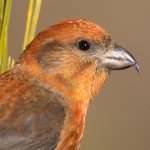
Help support ABC's conservation mission!
ABC advocates for the conservation of old-growth forests in the Pacific Northwest, which provide conifer-rich habitat for the Red Crossbill and other species, including the Northern Spotted Owl, Varied Thrush, and Marbled Murrelet.
We have also worked to develop regional conservation alliances that will improve habitat conditions in ponderosa pine forests of the Pacific Northwest, in particular helping private landowners implement forest management plans. ABC has produced several guides detailing this work, which are available on ABC's website.
Get Involved
Policies enacted by the U.S. Congress and federal agencies, such as the U.S. Fish and Wildlife Service, have a huge impact on U.S. birds. You can help shape these rules for the better by telling lawmakers to prioritize birds, bird habitat, and bird-friendly measures. To get started, visit ABC's Action Center.
Living a bird-friendly life can have an immediate impact on the birds around you. Doing so can be as easy as adding native plants to your garden, avoiding pesticides, and keeping cats indoors. To learn more, visit our Bird-Friendly Life page.
American Bird Conservancy and our Migratory Bird Joint Venture partners have improved conservation management on more than 8.5 million acres of U.S. bird habitat — an area larger than the state of Maryland — over the last ten years. This is a monumental undertaking, requiring the support of many, and you can help by making a gift today.






































